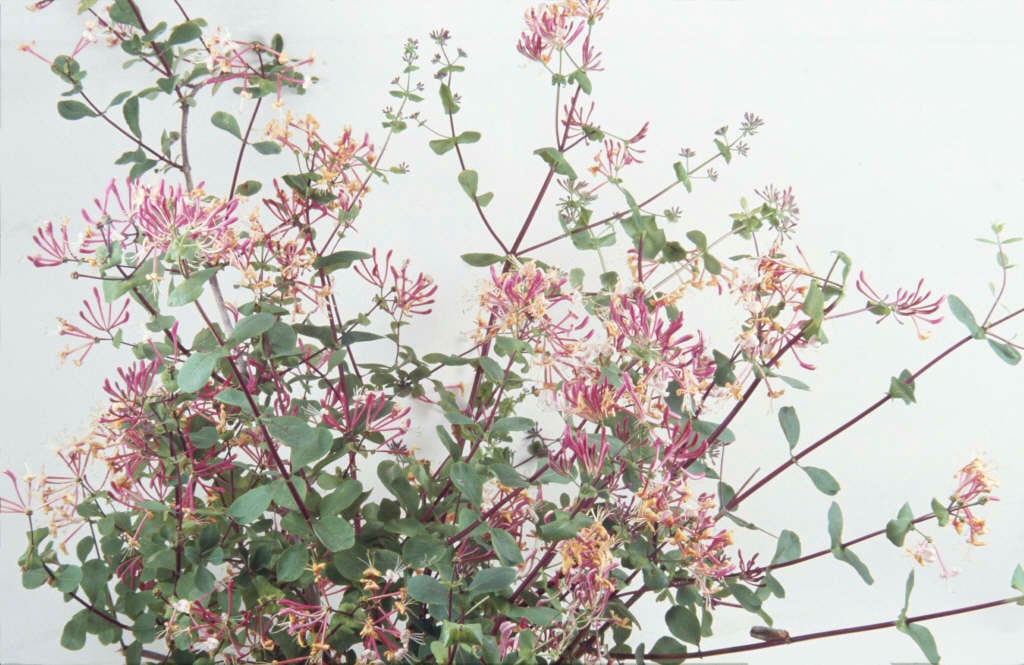Lonicera etrusca 'Donald Waterer'
honeysuckle 'Donald Waterer'
A vigorous deciduous or semi-evergreen woody, twining climber about 4m tall, with reddish stems, grey-green downy foliage and clusters of fragrant, tubular red flowers with white throats, the flowers aging to orange yellow, and followed by bright orange berries

Buy this plant
Size
Ultimate height
2.5–4 metresTime to ultimate height
5–10 yearsUltimate spread
1.5–2.5 metresGrowing conditions
Moisture
Moist but well–drained, Well–drainedpH
Acid, Alkaline, NeutralColour & scent
| Stem | Flower | Foliage | Fruit | |
| Spring | Red | Green Grey Silver | ||
|---|---|---|---|---|
| Summer | Red White Orange Yellow | Green Grey Silver | ||
| Autumn | Green Grey Silver | Orange | ||
| Winter |
Position
- Full sun
Aspect
South–facing or East–facing
Exposure
Sheltered Hardiness
H5Botanical details
- Family
- Caprifoliaceae
- Native to GB / Ireland
- No
- Foliage
- Deciduous or Semi evergreen
- Habit
- Climbing
- Potentially harmful
- Fruit are ornamental - not to be eaten. Wear gloves and other protective equipment when handling. Pets: Fruit are ornamental - not to be eaten - see the HTA guide to potentially harmful plants for further information and useful contact numbers
- Genus
Lonicera can be deciduous and evergreen shrubs, or climbers with twining stems. The tubular or two-lipped flowers, often very fragrant, are followed by red or black berries
- Name status
Accepted
How to grow
Cultivation
Grow this climbing honeysuckle in full sun, and thrives in any fertile, moist but well-drained soil. See Honeysuckle (Climbing) cultivation
Propagation
Propagate by layering, softwood cuttings, semi-ripe cuttings, leaf-bud cuttings and hardwood cuttings
Suggested planting locations and garden types
- City and courtyard gardens
- Coastal
- Cottage and informal garden
- Mediterranean climate plants
- Climber and wall shrubs
- Wall side borders
Pruning
Pruning group 11 after flowering
Pests
May be susceptible to honeysuckle aphids, thrips and glasshouse whitefly
Diseases
May be susceptible to powdery mildews, leaf spot (fungal) and silver leaf
Get involved
The Royal Horticultural Society is the UK’s leading gardening charity. We aim to enrich everyone’s life through plants, and make the UK a greener and more beautiful place.